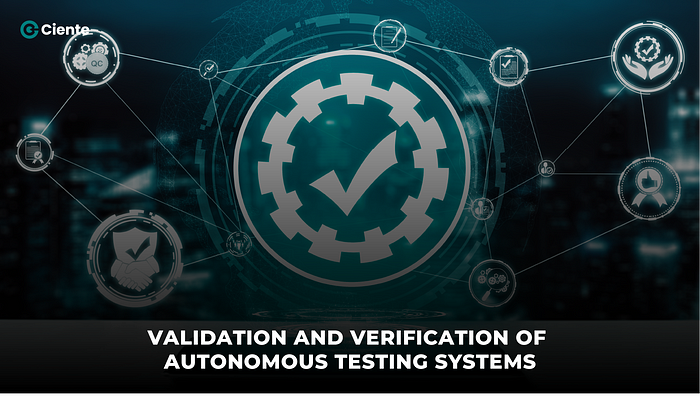Validation And Verification Of Autonomous Testing Systems

Strong 8k brings an ultra-HD IPTV experience to your living room and your pocket.
Autonomous testing (AT) systems are revolutionizing the software development landscape. These intelligent systems automate repetitive test cases, freeing up human testers for more strategic tasks. However, the very autonomy that brings efficiency also introduces new challenges, particularly in ensuring the validity and reliability of the testing process. This blog delves into the critical aspects of verification and validation (V&V) for AT systems, laying the groundwork for trustworthy and effective automated testing. By integrating marketing technology into the V&V process, organizations can streamline testing workflows, enhance accuracy, and ensure that AI-driven demand generation strategies are built on a foundation of reliable data and insights.
Understanding Verification and Validation
Verification and validation, though often used interchangeably, serve distinct purposes in the context of AT systems. Verification ensures the AT system functions as intended, adhering to its design specifications and internal logic. Here, the focus is on the “how” — how the system processes the test script, executes the tests, and interprets the results.
Validation, on the other hand, confirms that the AT system actually achieves its intended goals. It asks the “what” — does the system identify the correct defects? Does it provide accurate and actionable test results? Validation bridges the gap between the technical capabilities of the AT system and the real-world needs of software development.
V&V Strategies for Autonomous Testing
Effective V&V for AT systems requires a multi-pronged approach, leveraging various techniques to build confidence in the testing process. Here are some key strategies:
Formal Verification: This method employs mathematical models and automated tools to formally analyze the AT system’s code and logic. Formal verification helps identify potential design flaws and logical inconsistencies before deployment.
Static Code Analysis: Static code analysis tools scrutinize the AT system’s code structure for vulnerabilities, coding errors, and potential deviations from best practices. By addressing these issues early on, developers can enhance the system’s reliability.
Model-Based Testing (MBT): MBT utilizes a formal model of the application under test (AUT) to generate test cases. This helps ensure the AT system comprehensively covers the AUT’s functionality and identifies potential edge cases.
Mutation Testing: This technique introduces deliberate errors (mutations) into the AT system’s code and observes if the system can detect these introduced faults. Successful detection indicates the system’s effectiveness in identifying actual defects.
Scenario-Based Testing: Real-world test scenarios are meticulously crafted to represent potential user interactions and system behaviors. By running the AT system through these scenarios, developers can verify its ability to handle various situations.
Data Validation: The quality of the data used by the AT system significantly impacts its effectiveness. Techniques like data fuzzing and boundary value analysis can be employed to validate the system’s behavior under different data sets and edge cases.
Test Result Validation: Validating the results produced by the AT system is crucial. This can involve a manual review of selected test cases, comparison with manual testing results on a subset of cases, or leveraging dedicated result validation tools.
Continuous V&V for Evolving Systems
AT systems are not static entities. They often incorporate machine learning (ML) algorithms that learn and adapt over time. This dynamic nature necessitates a continuous V&V approach. Techniques like regression testing, where previously validated test cases are re-run after system updates, become vital to ensure the system’s continued effectiveness. Additionally, monitoring the AT system’s performance in production environments helps identify potential issues and refine the V&V process further.
Building Trust in Autonomous Testing
Rigorous V&V practices are paramount for building trust in AT systems. By employing a combination of techniques and continuously monitoring the system’s performance, developers can ensure that AT contributes meaningfully to software quality and efficiency. This, in turn, fosters a more reliable and efficient software development lifecycle.
The Road Ahead
As AT systems become more sophisticated, so too must V&V practices evolve. Integration of AI-powered tools for test case generation and analysis, coupled with a focus on explainable AI to understand the AT system’s decision-making processes, will be crucial advancements. Continuous collaboration between developers, testers, and V&V specialists will pave the way for robust and trustworthy autonomous testing, ensuring the continued success of this transformative technology.
Note: IndiBlogHub features both user-submitted and editorial content. We do not verify third-party contributions. Read our Disclaimer and Privacy Policyfor details.







